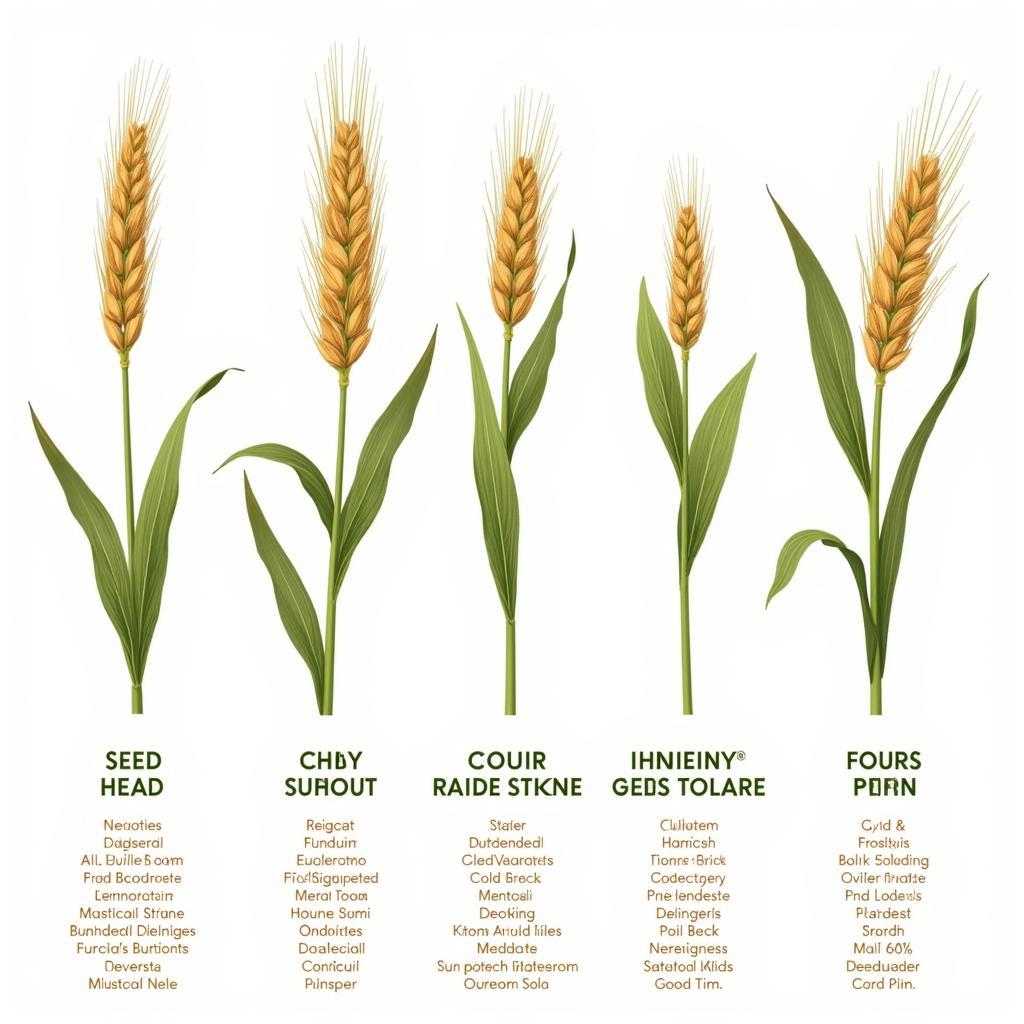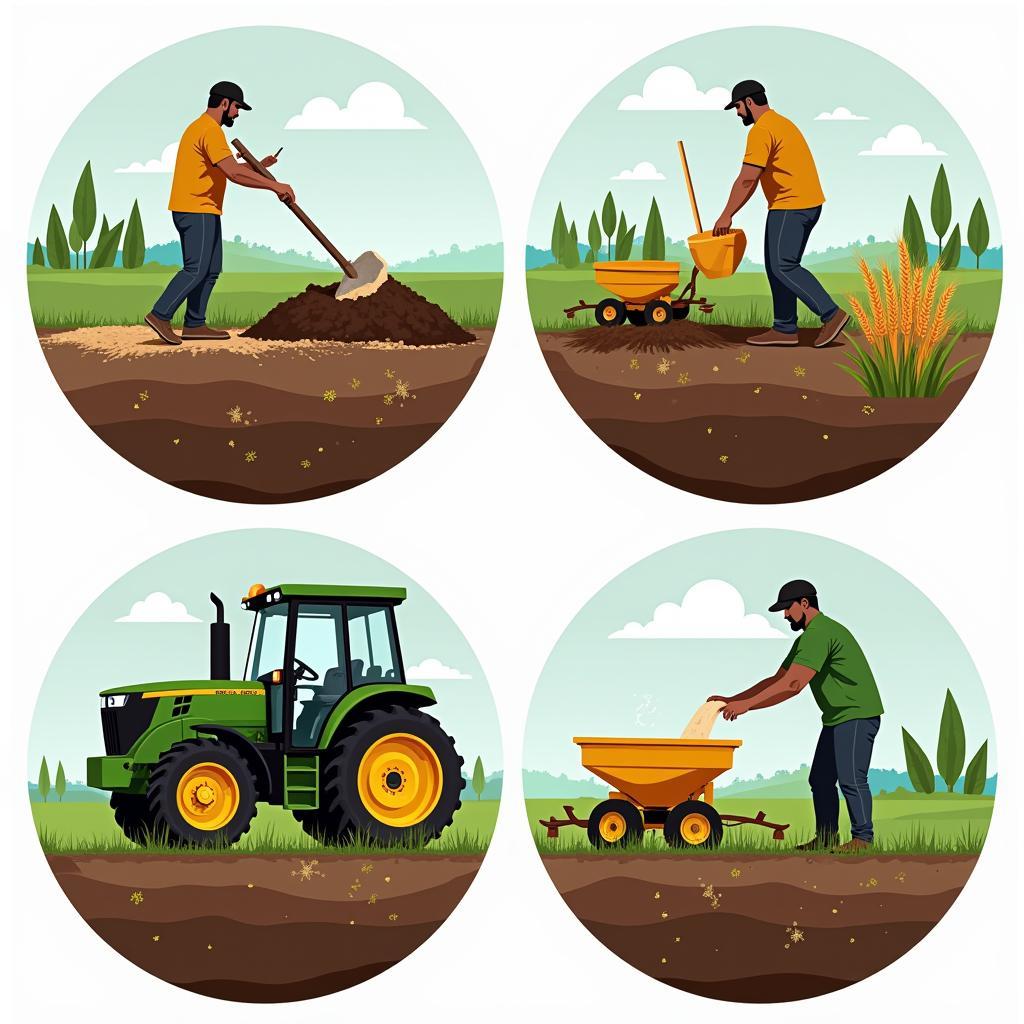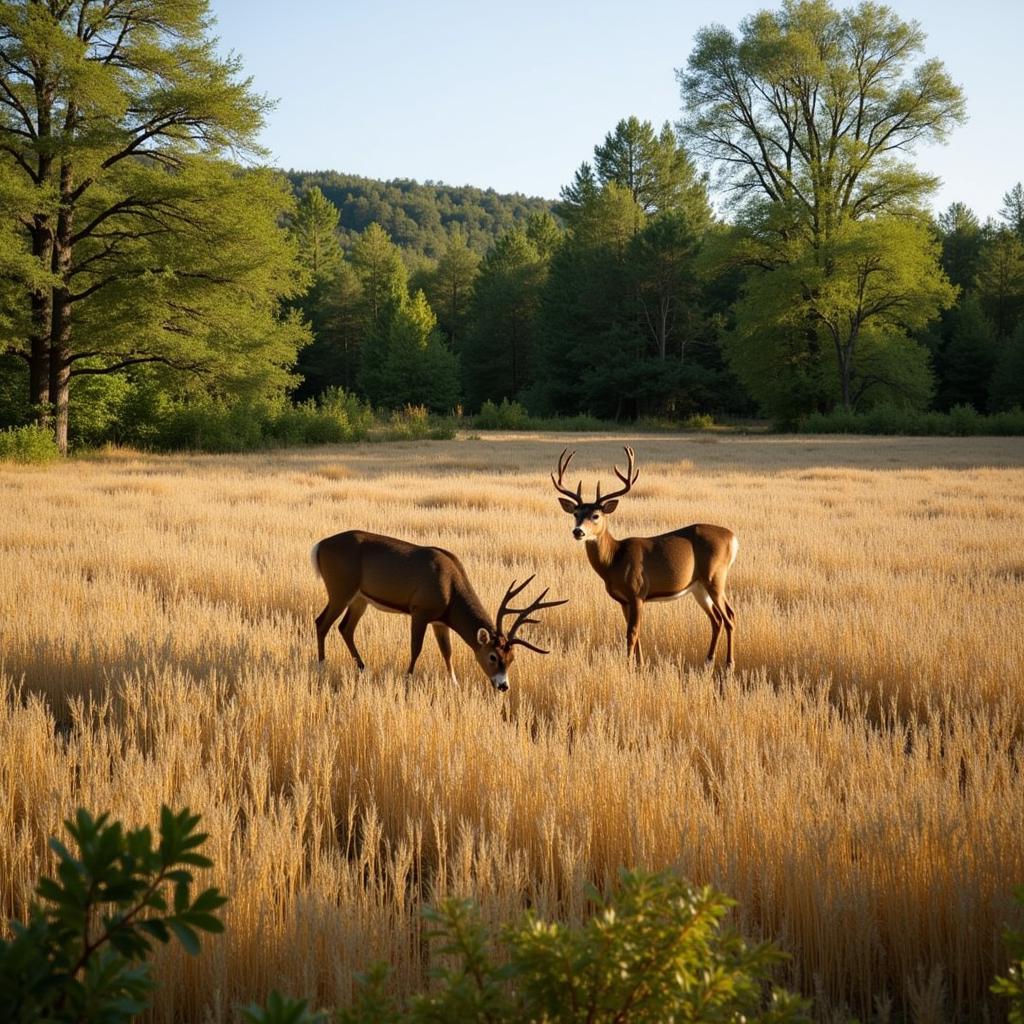Wheat Food Plots offer an attractive and nutritious food source for wildlife, particularly during the colder months. Understanding the nuances of establishing and maintaining a thriving wheat food plot is crucial for its success. This guide explores everything you need to know about maximizing your wheat food plot, from selecting the right variety to ensuring optimal growth and attracting wildlife.
Planting a successful wheat food plot requires careful planning and execution. Factors like soil type, climate, and the target wildlife species all play a role in determining the best approach. Let’s dive into the specifics.
Choosing the Right Wheat Variety for Your Food Plot
Selecting the appropriate wheat variety is the cornerstone of a successful food plot. Consider factors such as hardiness, maturity rate, and palatability when making your decision. Winter wheat is a popular choice for its resilience and ability to provide forage throughout the late fall and winter. Winter wheat for food plots provides valuable insights into selecting the best winter wheat variety for your specific needs. Understanding the growth habits and nutritional content of different wheat varieties is essential. For example, some varieties are more resistant to diseases and pests, while others offer higher protein levels.
 Selecting the right wheat variety for food plots
Selecting the right wheat variety for food plots
Soil Preparation and Planting Techniques
Proper soil preparation is paramount for a flourishing wheat food plot. Conducting a soil test is highly recommended to determine the pH and nutrient levels. Amend the soil accordingly to create an optimal growing environment. Wheat thrives in well-drained soil with a pH between 6.0 and 7.0. Tilling the soil helps to loosen compacted areas and improve drainage. Buckwheat for food plots can be a valuable addition to your planting strategy, as it can improve soil health and provide early-season forage.
 Preparing the soil for a wheat food plot
Preparing the soil for a wheat food plot
Once the soil is prepared, it’s time to plant the wheat seeds. The ideal planting depth is around 1-2 inches. Ensure even seed distribution for optimal coverage and growth. Consider using a seed drill or broadcaster for larger food plots. For smaller areas, hand broadcasting can be effective.
Maintaining Your Wheat Food Plot
Maintaining a healthy wheat food plot requires ongoing attention. Regular monitoring for weeds, pests, and diseases is essential. Implement appropriate control measures as needed. Consider using food plot screen seed to help minimize weed competition and enhance the overall success of your plot.
Watering is crucial, especially during dry periods. Ensure adequate moisture to promote healthy growth. Fertilization may be necessary, depending on the soil test results. A nitrogen-rich fertilizer can boost growth during the early stages.
“A well-maintained wheat food plot can provide a valuable food source for wildlife throughout the year,” says Dr. Emily Carter, Wildlife Biologist. “Proper soil preparation, variety selection, and ongoing maintenance are key to achieving optimal results.”
Attracting Wildlife to Your Wheat Food Plot
Wheat food plots are particularly attractive to deer, turkey, and other game animals. Creating a diverse habitat around the plot can further enhance its attractiveness. Consider planting late season deer food plot options alongside the wheat to provide a varied food source and attract a wider range of wildlife.
Strategic placement of the food plot is crucial. Choose an area that is accessible to wildlife while also offering some cover and protection. Creating access trails and corridors can further encourage wildlife to utilize the plot. Buckwheat food plot can be used as a quick-growing attractant to draw animals to the area while the wheat is establishing itself.
“Providing a diverse range of food sources is essential for supporting healthy wildlife populations,” adds Dr. David Miller, Wildlife Ecologist. “Wheat food plots can be a valuable component of a comprehensive habitat management plan.”
 Wildlife enjoying a wheat food plot
Wildlife enjoying a wheat food plot
Conclusion
Establishing a thriving wheat food plot requires careful planning, diligent execution, and ongoing maintenance. By choosing the right wheat variety, preparing the soil effectively, and implementing proper maintenance practices, you can create a valuable food source for wildlife, enhancing their habitat and supporting healthy populations. With thoughtful planning and attention to detail, your wheat food plot can become a haven for wildlife and a testament to your commitment to conservation.
FAQ
- What is the best time to plant a wheat food plot?
- How much wheat seed do I need per acre?
- What are the common pests and diseases affecting wheat food plots?
- How often should I fertilize my wheat food plot?
- What other plants can I incorporate alongside wheat in a food plot?
- How can I protect my wheat food plot from deer overgrazing?
- What are the benefits of using winter wheat for food plots?
Need support? Contact us at Phone Number: 02437655121, Email: minacones@gmail.com or visit us at 3PGH+8R9, ĐT70A, thôn Trung, Bắc Từ Liêm, Hà Nội, Việt Nam. We have a 24/7 customer service team.